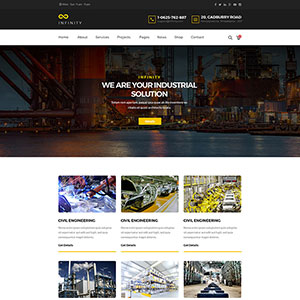After analyzing the completed carrier questionnaires, and the bid rates, it is time to eliminate those carriers that don’t meet expectations in terms of service, coverage, rates, and other key variables. It is also the time to identify a short list of potential bid award winners to discuss their proposals in more detail. This blog focuses on how to get the most out of the Carrier Interviews.
Since these truckers, IMCs and/or freight brokers will interact directly with your customers, it is very important to meet with your potential business partners in person. Zoom or TEAMS meetings may be necessary in some instances (e.g. small bid award, distance from shipper), but in-person meetings are preferable.
For carriers that will be given a select group of lanes or limited customers, a 30-minute interview may suffice. Carriers that may receive a larger bid award, a 60-minute meeting, or longer, may be required. Some carriers may ask for a pre-meeting lunch or dinner. My advice would be no lunches or dinners during this process so you can be fair and objective. I also recommend meeting in a comfortable conference room that has good ventilation, and a screen that can be connected to a computer. Keep in mind that some carriers will bring a small “army” to these meetings.
I also recommend that you are clear on the date, location and timeline of the interview. Manage the time carefully so other carriers don’t have to wait extended periods of time for their interviews and/or miss their return flights.
The interview should consist of 6 components.
1. Introductions
2. Shipper Overview – 5 minutes
The senior project manager should utilize a maximum of 3-4 PowerPoint slides. That person should focus on those elements that are most important to their transportation network. The slides should be easy to understand and highlight service, coverage, drop trailer or live load, appointment times, customer pickup and delivery requirements, reports – – – whatever is most important to the shipper and their customers.
3. Carrier Overview – 10 minutes
Similarly, carriers should prepare 3 or 4 PPT slides. Some carrier salespeople can be quite long-winded. The carrier spokesperson needs to be aware of their time allocation. The trucker or broker should be asked to outline how they would service the account in terms of assets, customer service, reports etc.
Shippers need to listen carefully, and probe as required. Is the carrier a good fit from a service and culture perspective? How prepared are they for the meeting?
Recently we conducted a bid for a mid-size shipper that moved truckloads of freight throughout the United States. On a weekly basis, they move one or two full loads direct to most of their customers and loads of LTL freight to multiple distribution centers. When one senior representative of a large carrier spoke, he mentioned that his company works on the 80/20 principle. Large shippers, twenty percent, receive eight percent of their assets. Smaller shippers, with 1 or 2 loads a week to specific locations, receive the balance of their capacity. If the carrier representative had studied the data, they would have realized that they were communicating the wrong message to this shipper. They did not receive any business.
As a shipper, it is important to focus on whether the carrier is professional and how well they understand your requirements. Do they customize their presentation to address your specific requirements or deliver a “cookie cutter” message?
4. Review Questions/Concerns from Carrier’s Bid – 20 minutes
This is the time to obtain answers to questions that are not fully answered in the questionnaire. What is the carrier’s OR and how long has company been profitable? If the carrier has 10 to 20 trucks and has bid on multiple lanes, which blocks of business are they best equipped to handle (e.g. where they have reliable backhaul traffic)? If you are looking at LTL carriers, do they serve specific areas on a direct basis or through (handoffs to) interline carriers?
How will your account be serviced? Where is the carrier’s equipment yard that is closest to your facilities? Do they have the assets and resources to manage the account? What added value to they bring to the business? What reports are they able to supply?
5. Rates – 20 minutes
We prepare rate analysis sheets for each carrier and present this information on the screen so each carrier can see their rate, the best rate, and where they rank, on every lane, for which they submitted a quote. Some incumbents hold back in their round 1 bid. This exercise helps them see that they need to be more competitive to retain the business. Where they are not competitive, we ask the carrier if they want this business, if they can do better on price, and how many loads a week they can handle. During this exercise, it becomes clear which blocks of business are the best fit for each transport company.
6. Next Steps – 5 minutes
At the end of the meeting, we advise the carriers that we will send them their rate analysis, via email, for the lanes they bid on. We ask them to resubmit their final bid by a specific deadline. We discuss whether the client will be seeking a contractual agreement or whether a rate sheet will be satisfactory. We also advise them of the length of the bid award and the rate increase formula in future years. The carrier interview, and the carrier’s responses during, and after the meeting, are key elements in the shipper’s decision-making process.
To stay up to date on Best Practices in Freight Management, follow me on X (formerly Twitter) @DanGoodwill and join the Freight Management Best Practices group on LinkedIn. If you are looking for ways to improve the effectiveness of your freight management processes, to save money on freight, or to conduct a freight bid, contact me at dan@dantranscon.com.




















